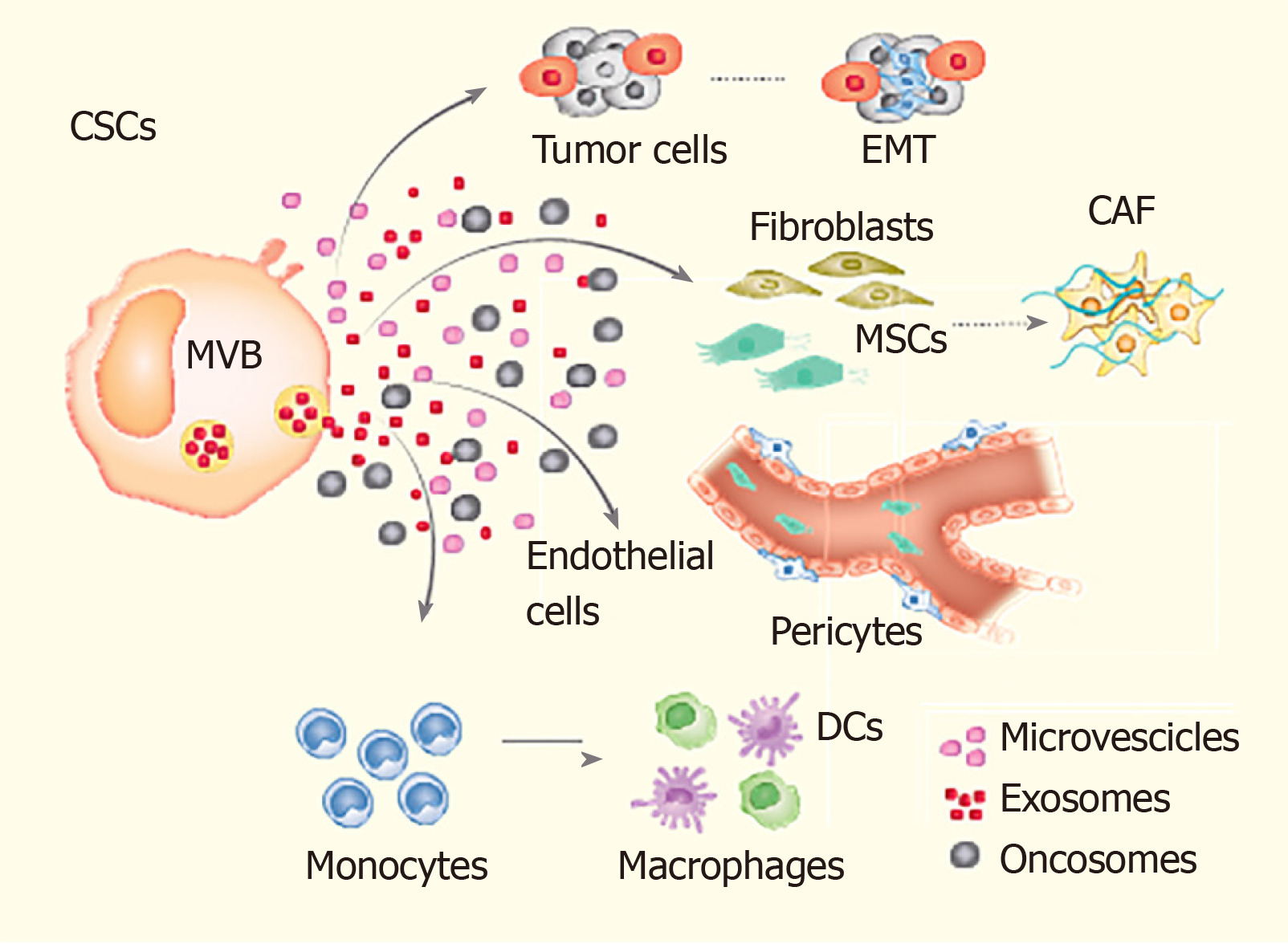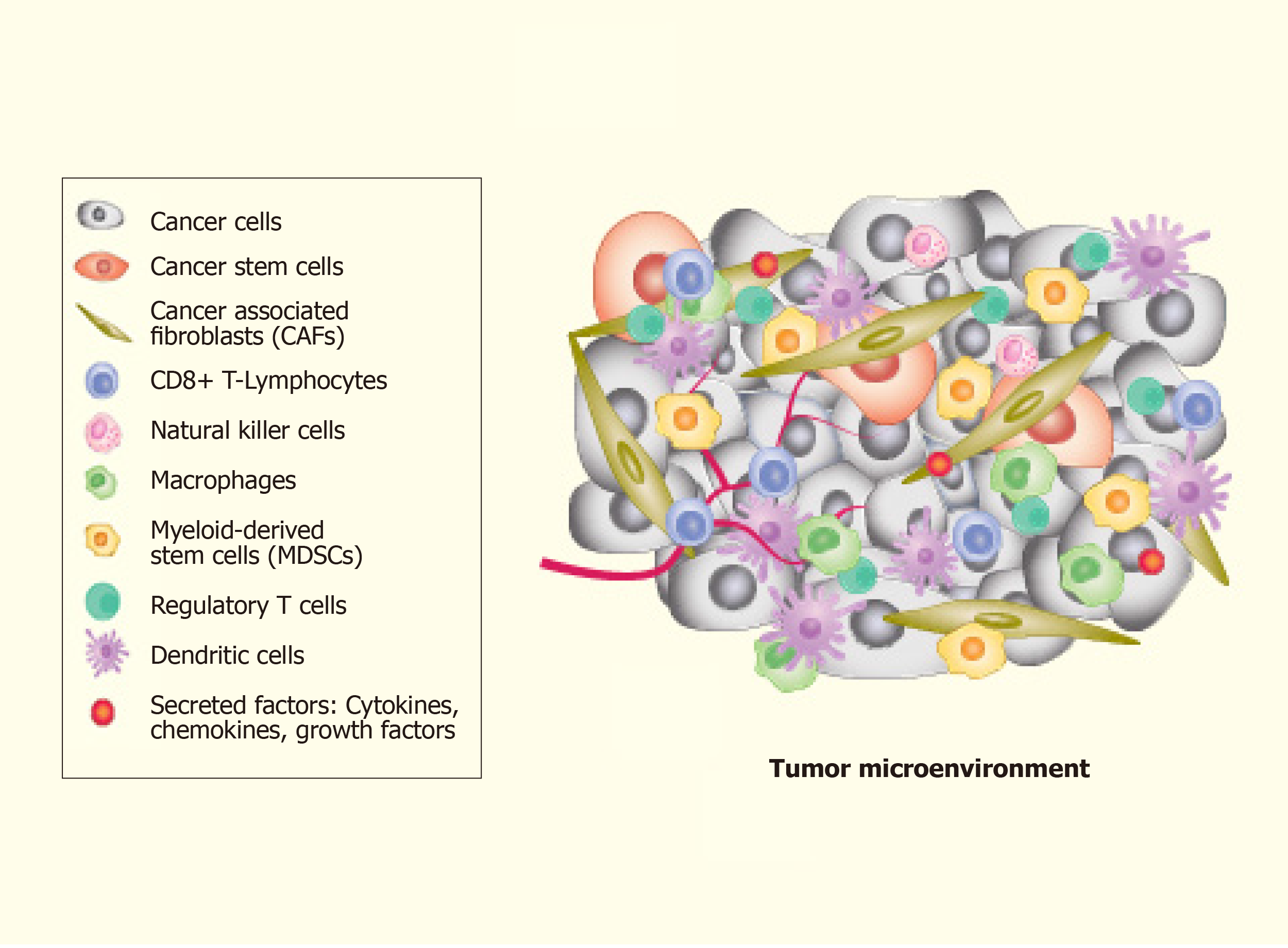Copyright
©The Author(s) 2020.
World J Stem Cells. Jun 26, 2020; 12(6): 406-421
Published online Jun 26, 2020. doi: 10.4252/wjsc.v12.i6.406
Published online Jun 26, 2020. doi: 10.4252/wjsc.v12.i6.406
Figure 1 The mechanism of the dynamic interconversion between cancer stem cells and non-cancer stem cells.
The cancer stem cells interact with various cell populations of the tumour microenvironment, i.e., tumour epithelial cells, mesenchymal stem cells, endothelial cells, epithelial mesenchymal transitioning cells, fibroblasts, immune cells (monocytes, macrophages etc.). This interaction can cause cancer cell stemness phenotype, promotion of tumour cell invasion, angiogenesis and metastasis. EMT: Epithelial to mesenchymal transition; CAF: Cancer-associated fibroblasts; MSCs: Mesenchymal stem cells; CSCs: Cancer stem cells; DCs: Dendritic cells.
Figure 2 The components of the tumour-microenvironment.
The cellular components of the tumour-microenvironment include different types of cells including such as epithelial tumour cells, cancer stem cells, and immune cells. Every type of cellular component contributes to maintain the tumour alive and to develop neo-vessels for promoting the tumour cells dissemination.
- Citation: Aramini B, Masciale V, Haider KH. Defining lung cancer stem cells exosomal payload of miRNAs in clinical perspective. World J Stem Cells 2020; 12(6): 406-421
- URL: https://www.wjgnet.com/1948-0210/full/v12/i6/406.htm
- DOI: https://dx.doi.org/10.4252/wjsc.v12.i6.406














